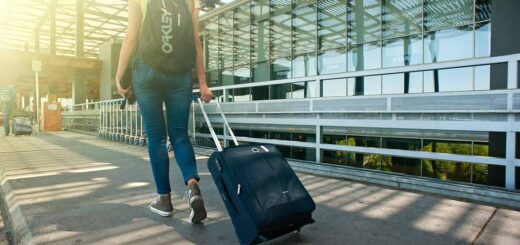Open Doors: Countries Offering Low-Cost, Family-Inclusive Visas in the Final Months of 2025
Moving with a family is expensive and stressful — but some countries still offer relatively low-cost, family-friendly visas as 2025 closes out. This guide highlights practical, lower-cost options (not “free”) that allow spouses and children to relocate together, explains who they suit, and gives action steps so you can apply confidently before year-end.
Quick list (detailed below): Panama (Friendly Nations), Paraguay (SUACE / low-deposit routes), Ecuador (Pensionado / Rentista), Uruguay (income-based residency), plus notes on digital-nomad / temporary family options and safe ways to evaluate programs.
1) Panama — Friendly Nations & Qualified Investor Routes (family-friendly, comparatively affordable)
Why it stands out: Panama’s Friendly Nations programme and qualified-investor routes remain among the most accessible ways for families to get residency in the Americas. Options include a real-estate purchase or a fixed-term bank deposit (commonly shown as ≈ USD 200,000 for Friendly Nations routes), and families (spouse and dependent children) may be included. Panamanian provisional residency typically converts to permanent status after the required period. Panama Friendly Nations Visa+1
What to expect:
- Typical qualifying options: property purchase (~USD 200k for Friendly Nations) or fixed-term deposit. Panama Friendly Nations Visa
- Government filing fees + legal assistance are additional (but overall far lower than European golden-visa minimums). A Group C
- Work rights: with the right permit, residents can work. Path to citizenship after years of residence exists for those who qualify. Citizen X
Good for: families wanting a Latin-American base, relatively quick provisional residency, and lower financial threshold than many EU programs.
2) Paraguay — SUACE & Low-Deposit Permanent Residency Options (very affordable)
Why it stands out: Paraguay has traditionally offered one of the cheapest routes to permanent residency in South America. Two parallel pathways exist: a small bank-deposit/“economic solvency” option (historically a few thousand USD) and a newer SUACE (residency-by-investment) program with a larger minimum (widely reported ~USD 70,000) for structured business or investment commitments. The low-deposit route can be especially attractive for families on a tight budget. Residencies+1
What to expect:
- The small deposit route often involves depositing the equivalent of a set monthly wage total into a Paraguayan bank (examples show totals in the low thousands, depending on the indexation). Residencies+1
- SUACE offers a clearer “investment” pathway (≈ USD 70k) for applicants seeking immediate permanent residency under specific business creation/registration rules. Discus West Africa
- Family inclusion: spouse and minor children can be included under residency applications; check exact definitions and fees per dependent. Residencies
Good for: families on a tight budget who want permanent residency quickly and are comfortable relocating to Paraguay.
3) Ecuador — Pensionado / Rentista / Dependent Routes (affordable, family-friendly)
Why it stands out: Ecuador has several low-cost residency categories that are family-friendly, such as the Pensionado (retiree) and Rentista (stable passive income) visas. Minimum income thresholds are modest by global standards (figures change with local minimum wage updates — examples in 2025 show monthly income thresholds in the ~$1,300–$1,500 range for the main applicant, with smaller amounts required per dependent). Taxes for Expats+1
What to expect:
- Applicants must demonstrate stable foreign income (pension, rent, investment returns) at the required monthly level; dependents can be included. Taxes for Expats+1
- After holding temporary residency you may upgrade to permanent residency (timeline depends on visa type). Family integration is straightforward in most categories. EcuaAssist
Good for: families where one member has a steady foreign income (pension or investment) and wants a low-cost Latin American base with family inclusion.
4) Uruguay — Flexible Residency with Moderate Income Requirement (stable, family-friendly)
Why it stands out: Uruguay is slightly more expensive than Paraguay or Ecuador but still accessible for many families. Residency can be secured by demonstrating a stable income (examples: approx. USD 1,500/month for a single applicant, higher for families) rather than a large upfront investment. Dependents may be included. Uruguay offers good public services and safety — factors families value. Golden Harbors+1
What to expect:
- Income-based residency makes Uruguay attractive for remote workers, retirees or small business owners who can prove stable funds. Golden Harbors
- Family members are included when applying for residency; residency-to-citizenship paths exist after several years. CitizenMatch
Good for: families seeking a stable, service-rich country in South America without huge up-front payments.
5) Other lower-cost/temporary family options worth noting
- Digital-nomad & remote-work visas: Some countries (Ecuador, Portugal’s D7 alternatives, some Caribbean states) offer temporary remote-work visas that allow dependents in certain circumstances — good as a short-term family test-move. Check local rules on dependent inclusion. The Guardian+1
- Pan-regional offers: some Caribbean nations offer low-cost retiree/residency options for families with modest income proofs. These can be family-friendly but vary widely. (See country pages for specifics.) Investopedia
How to judge “low-cost” — realistic checklist
When you evaluate any program, don’t be fooled by headlines. Here’s what to calculate:
- Upfront official requirement (deposit, property min, investment).
- Per-dependent fees (many programs add small per-child charges or require additional deposit amounts). Residencies
- Legal & notary fees (often 10–30% of gov fees if you use counsel). A Group C
- Living & integration costs (housing, school, transport, healthcare).
- Timing & hidden conditions (minimum stay, job restrictions, compulsory bank deposits). Taxes for Expats+1
Red flags & what to avoid
- Promises of “citizenship in weeks” — be skeptical. Most routes require years of residency.
- Unverified middlemen charging huge upfront sums — always verify registration and get a signed service agreement.
- Programs with shifting rules — some countries adjusted family reunification deadlines and conditions in 2025; check the latest legal text or official site before paying. LVP Advogados+1
Quick action plan — apply before the end of 2025
- Choose 1–2 target countries from the list above that match your budget and family needs.
- Get a cost sheet together: govt fees, legal fees, per-dependent fee, first-year living costs.
- Draft & apostille documents now: marriage/birth certificates, police checks, bank statements — these take time.
- Contact a vetted local immigration lawyer or reputed relocation service in the target country to confirm the current rules (rules changed often in late 2025). A Group C+1
- Apply for provisional residency / provisional deposit routes where available (Panama, Paraguay)—this gets your family moving while you complete longer steps.
Conclusion — family moves that are possible (and sensible) in late 2025
If your family goal is affordable residency with legitimate inclusion of spouse and kids, the Americas currently offer the most consistently low-cost options: Panama, Paraguay, Ecuador and Uruguay stand out depending on your exact budget and timeline. These are realistic alternatives to expensive EU golden-visa programs and can be quicker and more family-friendly — as long as you check the fine print and plan the full cost of relocation.


